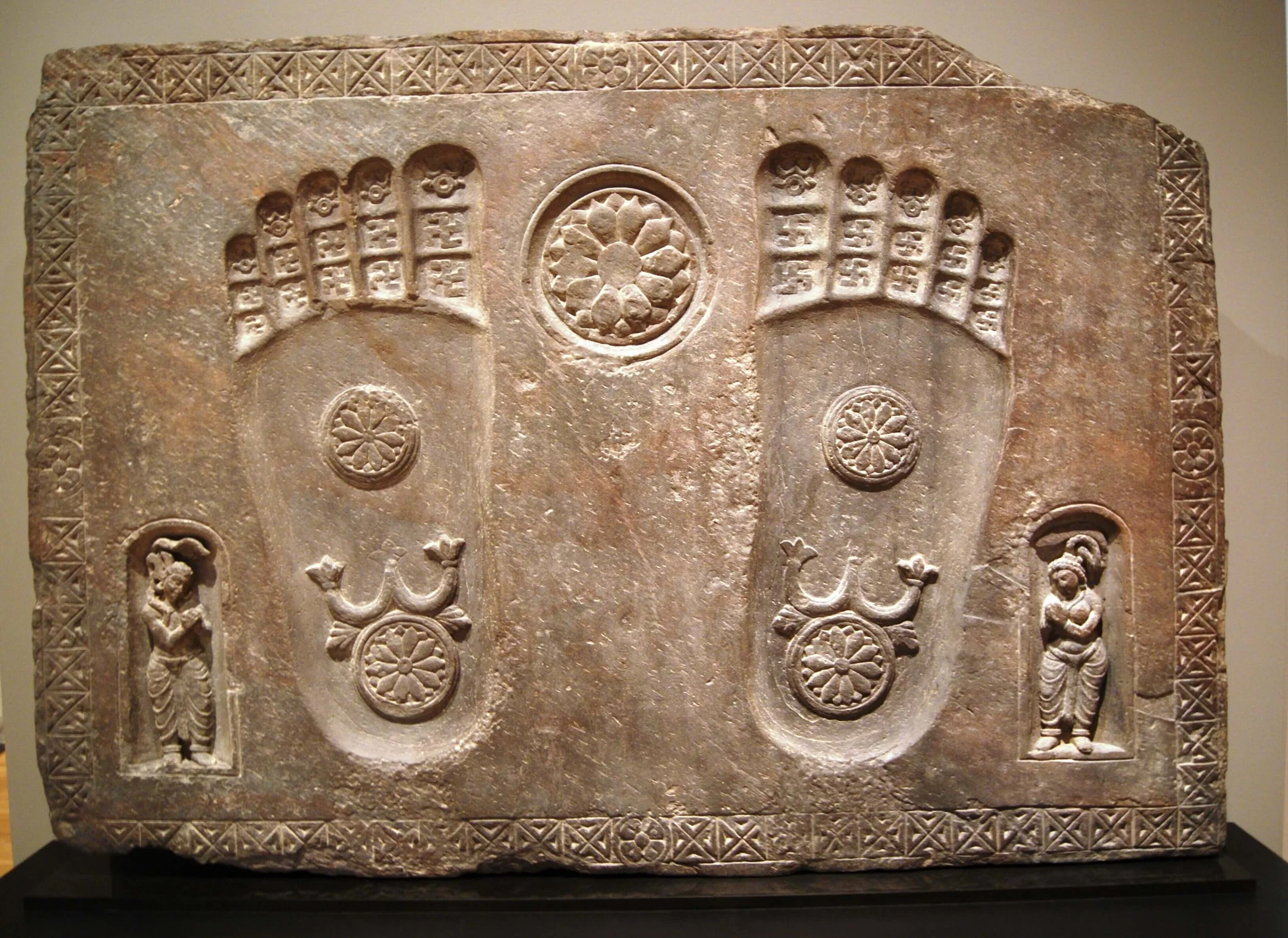The Buddha Jewel
by Jon Aaron and Upayadhi
Going for Refuge, or “Taking Refuge,” in the Buddha, Dharma and Sangha, is a way to acknowledge the protection they represent. In traditional Buddhist thought, only the Buddha (and the capacity for awakening he represents), only the Dharma (the nature of reality), and only the Aryasangha (the fully awakened disciples of the Buddha) can be relied upon. Everything else is ultimately impermanent and unreliable. People, places or things may offer respite or comfort, but ultimately they are provisional and will let us down, one way or another.
However, the Buddha was a man, and as such, he too passed away. What does it mean, then, to take refuge in the Buddha? And how is this practiced?
Some Buddhists would respond that they “act as if” – they ritually enact taking refuge in the Buddha, even if they are still entrenched in various attachments and “false refuges.” Acting as if over and over, they train the mind and the heart until, ultimately, they too become a Buddha.
One of the ways to practice taking refuge in the Buddha is to recollect the historical person of the Buddha. People find protection, inspiration and comfort by holding his image in their minds. A range of very simple to very elaborate practices of Buddhanussati exist: the practice of recollecting the Buddha by dwelling on his great qualities and visualizing him. There are numerous stories from the suttas which report cases of near instantaneous awakening simply by being in the presence of the Buddha! Thus, if we can draw him “near” to us in our minds’s eye, we might stand a greater chance of “catching Enlightenment.” This is not about superstition, or relating to the Buddha as a god, which he was not. Rather, it’s about the power of a compassionate and fully awakened being, and our degree of receptivity to that presence.
Imaginal practices can be quite transformative. If you were raised as a Christian, you might relate this practice as similar to one of holding a vision of Jesus or Mary in your heart. Reflecting upon how they lived their lives, their ministry.
Understandably, for others, Buddhanussati might feel odd or unnatural. Those of us brought up in a Jewish household might find it very difficult since it is considered a “sin” to bow down to false idols, or even to imagine the divine as anthropomorphic. This is also the case in many forms of Islam as it relates to the divine, although Mohammad is considered a prophet, and not a god.
The point is, our imaginations can be deeply informed by our conditioning. For some, this will be a gateway, while others may draw something of a blank.
Another way to go to seek refuge in the Buddha is the practice of recognizing the potential for awakening in all beings - oneself included! The Buddha Refuge reminds us that the Buddha was a human who achieved awakening through his own efforts, and if he can do it so can I. And so can she. And so can he. And so can they.
The capacity to Awaken – in this very lifetime—is innate in each of us. Some might say it is already there, immanent, but covered over by our confusion. Recognizing this – seeing through our own confusion and seeing into the infinite potential of others – is a true practice. Sometimes a challenging one. Yet it can build our confidence and deeply change how we relate to others, and to ourselves. It is in this potential for transformation in everyone that we seek refuge.
Others might understand Buddhanature to be bound up in the very nature of all reality, and not limited to the spiritual potential of sentient beings. Mountains and Rivers might also be manifestations of Buddhanature, for example.
Finding Refuge in the Buddha is only one third of this refuge practice, the two others being the Dharma and the Sangha, which we will unpack over the coming weeks. For now, it’s important to remember that, on any given day, or at any moment, we may find one of three refuges to be more accessible to us, while another might be elusive. They are but gateways. Some are more instinctual than others, depending on our conditioning. Part of our practice is to begin to recognize this. It is a place of investigation and curiosity.
At first, the idea of taking refuge may seem completely foreign or trite for people newer to Buddhism. It may feel almost mechanical, or something special we do only while on retreat. In time though, refuge becomes part of our lives – not only the idea but also its actuality. We become more imperturbable, our faith unshaken in situations of adversity. Going for Refuge, in this sense, is not just another practice. It becomes who we are.
A sculpture from ancient Gandhara, South Asia, depicting the footprints of the Buddha, known in Sanskrit as Buddhapada, 2nd century (Kushan period, c. late 1st – early 4th century C.E.).

